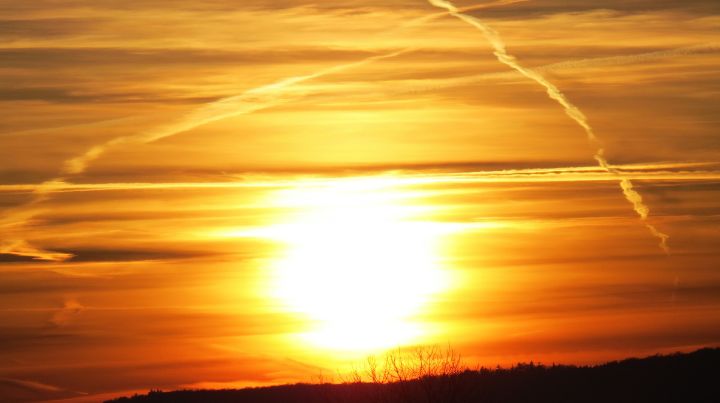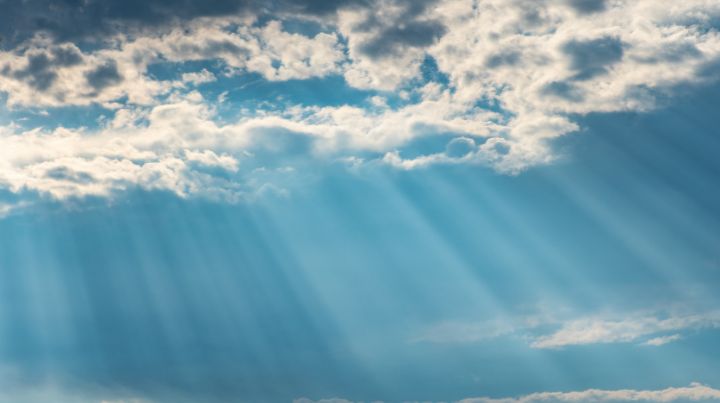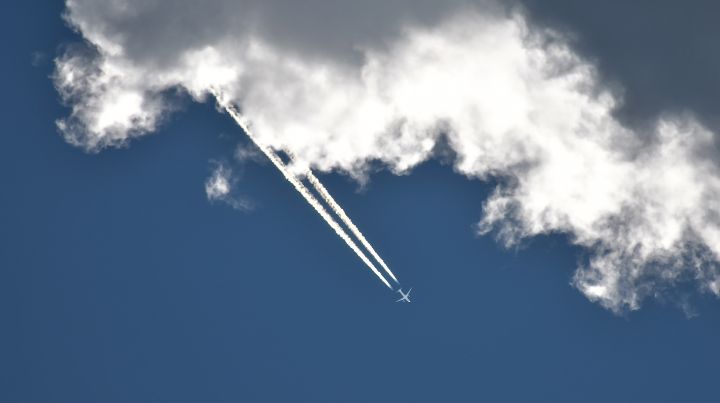Solar Modification: Why They’re Coming for Our Sunshine

Remember that episode of The Simpsons where Mr. Burns wants to block out the sun? Apparently, Congress does because they just requested a report by the White House that calls for funding and research into various geoengineering projects. Congress wants to combat global warming by cooling the Earth.
These proposed projects have the potential to wreak all kinds of havoc. But let’s first look at what experts claim is happening with global warming and how they think blocking sunlight will solve problems.
Global Warming
The Earth has always had a carbon cycle. Carbon moves between plants and animals on land and in the oceans, as well as between the air, soil, and water. However, since the Industrial Revolution, we’ve been burning more carbon taken from the Earth as fossil fuels and releasing it into the atmosphere as carbon dioxide. So the carbon cycle has been off balance for over two hundred years now.
The extra carbon dioxide in the atmosphere acts as an atmospheric blanket, trapping heat on Earth and causing a global rise in temperature.
(In case readers are interested: I suspect more things are at play in global weather patterns than we understand. I’m just trying to explain the justification for these geoengineering projects.)
Regardless of what I think, real scientists like Stephen Hawking and wannabe scientists like Bill Gates have been convinced that the Earth urgently needs to cool down, and the new White House paper discusses ways to make that happen.
In this new White House paper, they discuss different methods of solar radiation modification, a fancy way of saying blocking sunlight. The two that get the most discussion are Marine Cloud Brightening (MCB) and Stratospheric Aerosol Injection (SAI).
Marine Cloud Brightening
The idea for brightening marine clouds to cool the Earth’s atmosphere arose when scientists noticed that clouds in the wake of ships were brighter. These brighter clouds reflect more of the sun’s rays and produce a cooling effect.
Individual cloud droplets naturally form around tiny particulate matter. These little particles are called cloud condensation nuclei. The smaller and more densely packed the cloud condensation nuclei are, the shinier and more reflective the clouds become. So, the idea behind MCB is to spray particulate matter into marine clouds to make them reflect more sunlight back into space.
Cloud condensation nuclei can be any kind of particle; the kind matters less than the size. Scientists are researching spraying small salt particles into marine clouds to make them more reflective.
The biggest challenges for this project relate to the fact that producing the right size droplets to make clouds more reflective requires a lot of energy. Also, changing cloud formation has a lot of potential to interfere with normal rain patterns, which can be catastrophic for farmers, ranchers, and anyone depending on reliable weather patterns to maintain their livelihoods. Several universities are investigating MCB right now, but since the right kinds of marine clouds only cover about 10% of the Earth’s surface, MCB is not receiving as much attention as stratospheric aerosol injections (SAI).
Stratospheric Aerosol Injections
If the analog for MCB is shiny ship tracks, the analog for SAI is a volcanic blast. After Mt. Pinatubo erupted in 1991, global temperatures dropped by about 1ºF (0.6ºC) for the next fifteen months. Volcanoes spew huge amounts of dust into the atmosphere. The bigger particles often come to the ground fairly quickly, but the smallest particles can stay in the stratosphere for years, reflecting the sun’s rays back into space and cooling the Earth.
Some climate scientists believe that releasing microscopic particles into the stratosphere can mimic the effects of volcanic eruptions and thereby cool the Earth. Unlike MCB, which could only occur at a small scale in certain locations, SAI could (and probably would) affect the entire globe.
The newest White House paper primarily focuses on the need to research SAI more. Scientists admit all kinds of problems could arise, but they frame this as a need for more research funding.
The aerosol most discussed is sulfur dioxide. When volcanoes spew ash into the air, it typically contains a fair amount of sulfur dioxide, which is known for being highly reflective. However, sulfur dioxide comes with a lot of known problems. I’m old enough to remember acid rains killing fish in the Northeast; that was the result of sulfur dioxide emissions from the coal-fired industry reacting with water vapor to form sulfuric acid. Sulfur dioxide emissions are also associated with respiratory problems and are likely to impact the ozone layer negatively.
We know increased sulfur dioxide in the air will cause health problems, but researchers think that the weather changes they observe still warrant research.
Global Reaction
However, one of the biggest problems is that no one wants SAI tested near them. The Saami, a people indigenous to Scandinavia and northwestern Russia, protested testing in northern Sweden. They were actually able to shut down a Gates-funded project.
Mexico banned all geoengineering projects after a small group of American entrepreneurs conducted an experiment in Baja California.
Africans are also less than thrilled at their continent being used as a testing ground for American and European science projects. As one group of African scientists so succinctly put it, “Who has the right to implement an inherently global technology?”
Final Thoughts
I think the African scientists hit the nail on the head. No one has the right to tamper with the stratosphere knowingly, and thus the entire Earth’s climate, in the way that SAI would.
And let’s just step back a minute. Volcanic eruptions are disasters. The 1816 Tambora eruption lowered Earth’s temperature by 5ºF (3ºC), causing crop failures throughout the northern hemisphere and the “Year Without a Summer.” An Icelandic volcano in 536 plunged Europe, the Middle East, and parts of Asia into darkness for 18 months.
Why on Earth would we want to replicate these events, even on a small scale?
And environmental damage could be the least of our concerns. What happens when countries can suddenly blame each other for bad weather? What if two nuclear-armed countries like India and Pakistan suffer some sort of natural disaster and blame each other for it?
What about different countries’ needs? An ice-free Arctic might be awfully convenient for Russian shipping, but temperatures warm enough to make that happen would make many other parts of the world miserable. Who gets to decide these kinds of questions?
Could we do more to protect the environment? Sure. But there are plenty of ways to do that without deliberately polluting the stratosphere.
Additional Resources:
- What Is Solar Maximum, and Why Should I Care?
- Lessons from the Mount St Helens Volcano Eruption
- Prepping for Healthcare Shortages
- Natural Gas Bans: Coming to a City Near You

Don't Miss Out!
Join the thousands of people who rely on Mind4Survival preparedness advice by subscribing to our FREE newsletter.
- Practical preparedness information
- Zero Spam
- < 0.25% of people unsubscribe




Join Mind4Survival!
Stay informed by joining the Mind4Survival! 100% Secure! 0% Spam!
Follow Us!
Affiliate Disclosure
Mind4Survival is a free, reader-supported information resource. If you make a purchase through our link, we may, at no cost to you, receive an affiliate commission.



